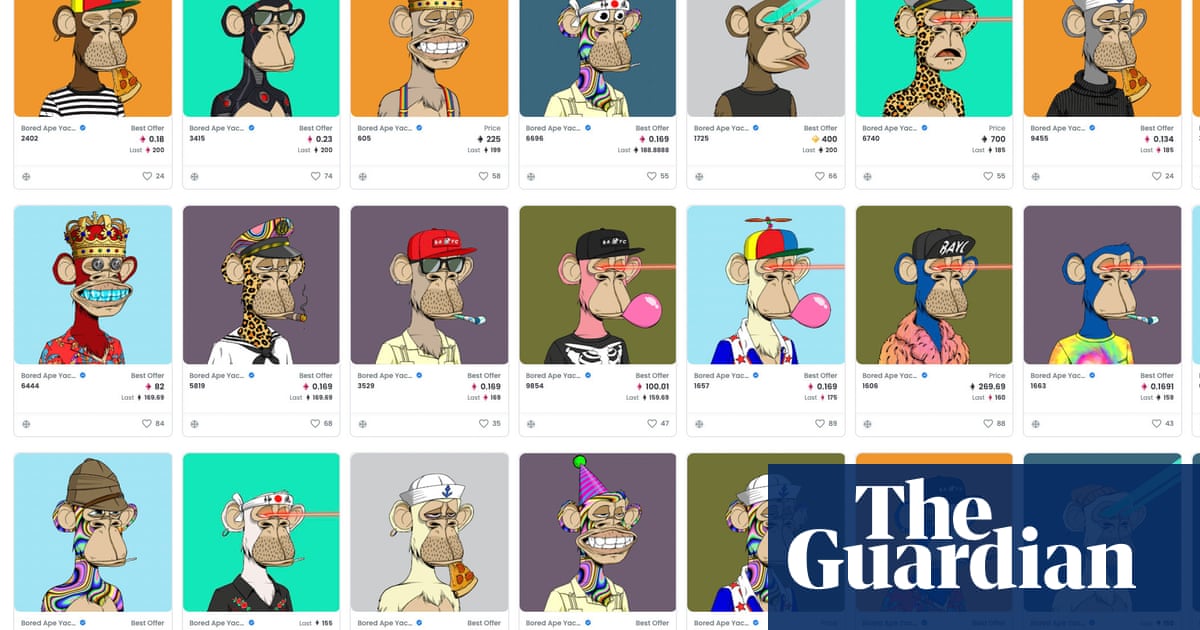How to avoid an NFT nightmare: Five rules for a successful NFT project launch

It was fantastic to be back in person with the TV production and finance community of London this week at the TellyCast Content Funding Festival. Huge thanks to Justin Crosby, the king of TV PR, for inviting me.
There was a real buzz around the emerging opportunity of funding television shows through NFT projects.
Entrepreneurial producers were most excited about the potential to make shows directly for audience members via NFT sales, without having to work with a funding broadcaster.
However, despite the enthusiasm, there doesn't seem to be a long line of projects about to drop from TV producers right now.
This is partly because there isn't a tried and tested model for how to launch a successful NFT for a TV show yet.
And despite the huge fortunes being made in the world of NFT art, the number of headlines about huge fails across the world of crypto is growing. This doesn't breed confidence.
The hot take? TV Producers and distributors are hesitant to disrupt their existing business models. It just feels too risky right now.
At TellyCast, I got to moderate a panel of pioneering blockchain entrepreneurs and experts in a discussion about the opportunities and pitfalls of Blockchain and NFTs.
These guys have already taken the plunge and have already dropped successful Web3 projects.
I was joined by Umair Masoom Usmani, Founder and CEO of Dubai's MContent, and Phil McKenzie, COO of FF3 which hails from the UK.
I was also lucky enough to discuss the challenges of this fast-emerging market with NFT dispute expert Lizzie Williams of Harbottle & Lewis. Lizzie helped us understand some of the issues that are impacting NFT entrepreneurs and rights holders.
And although we are still in the wild west phase of Web3's evolution, best practice is emerging from these early pioneers, as well as from early expeditions across the broader NFT space.
So how are these entrepreneurs ensuring they build projects for success, and avoid the potential pitfalls?
By carefully analysing the mistakes of others, anticipating the potential problems ahead, and adapting their approach accordingly to launch projects that have learned from the innovation of their peers.
And, yes, there continue to be a lot of high profile crypto-based disasters:



With so many huge issues dogging the crypto and NFT space, it's entirely understandable that producers would be adamantly against investing time and money into a world that seems so precarious.
So what exactly is going wrong?
Many of the issues that erode trust in the new world of NFTs fall into three areas:
Legal Disputes:
Not a week goes by without some kind of major dispute around NFTs. These include Quentin Tarantino's attempt to mint items from Pulp Fiction, and the recent case involving Jay-Z's Reasonable Doubt album. And, as high numbers of these cases start to come in front of the courts all at once, there is a lot of mess to sort through. Take a look at the recent case brought by Nike to see how complicated things can get very quickly.
Failure to deliver:
This is a huge issue. Lots of early minters made big promises about the deliverables for their NFT holders. But will they still be delivering all the perks offered if the value of their NFTs goes to zero? Huge launches have been followed by massive drops in value. Sometimes, with the minters nowhere to be seen. And in such a rapidly evolving ecosystem, tech issues can quickly disrupt a launch, as happened to no less than the NBA this week.
Lack of ongoing demand:
According to Gary Vee, 98% of NFT projects will go to zero. And this is likely due - in part or whole - to a lack of buyer demand. So, even with huge marketing campaigns around new projects which raise considerable hype - most projects in the NFTs space fail to deliver positive financial returns. There is an oversupply of new projects when measured against the number of investors willing to buy and hold. This means the NFT world is quickly moving towards a two-tier divide - blue-chip and non-blue chip NFTs.
Lots of these and other challenges are summed up well in this piece by Anil Dash, one of the digital art OG's.
However, despite the shocking headlines, we know that NFT technology can offer amazing opportunities to raise funding for content without relying on finance from brands, broadcasters or platforms.
And when people start getting it right, it could be transformative, especially for those entering the TV industry at such a fractured moment.
So, here goes with our five top NFT launch tips gleaned from the TellyCast Funding Festival and Content3 forums during 2022 so far:
- Get your legals sorted before you launch: According to panellist Lizzie Williams of Harbottle and Lewis, most of the problems in the NFT disputes she sees are down to a lack of legal preparation before launch. Deciding on court jurisdiction, rights in and rights out, and ensuring you are aware of the rules around financial securities and whether or not your token is regulated as a security or a utility is fundamental to the viability of your project. In the UK this is overseen by the FSA. Then you must agree on language in the smart contract which works for both the coders and - potentially - the courts. Lizzie mentioned that most lawyers in this space are kept busy simply because minters had failed to get these matters in order beforehand.
- Make sure demand outstrips supply: Umair Masoom Usmani, Founder of MContent was very clear at the TellyCast event. Before you launch an NFT, you must ensure that you have more buyers than you can provide products for. There has to be a huge FOMO element to your launch. This will drive demand, and increase prices. Without a clear undersupply, it is unlikely your launch will succeed.
- Community first, NFT second: According to Graham Wallington of WildEarth on the Content3 forum, their mint was successful because it was designed for his existing, highly engaged community of viewers. Phil Mckenzie of Goldfinch explained at TellyCast that his FF3 platform was conceived to help their existing community of film fans. Conversely, looking for a quick buck, many entrepreneurs mint an NFT to try to build a set of customers from nothing, which is the wrong way round. Build your following in real life, using social or email, understand their specific must-have needs, and then see item 2 before you launch.
- Keep it simple and don't rush: Failures in NFT launches are incredibly bad for business. You must conduct careful and extensive due diligence on all aspects of your launch to ensure it puts the token holders first. It must be absolutely secure, it must be simple to process, and the perks/rewards on offer must be crystal clear, and be delivered come what may. The rights have to be cleared and agreed. And the code must be robust. Check, check and check again!
- Utility trumps everything: When considering your token's smart contract and overall offer to prospective holders, many early NFT projects were designed simply to try and drive massive initial uptake so that prices would skyrocket, and secondary sales on Opensea would offer fantastic secondary royalties. But this is short-termism. As the NFT market evolves, like the internet, the longer-term winners will be those who offer huge functional value for very low or no cost, like Google's Search or Maps functions. The losers will be those building get-rich-quick projects.
The NFT launch successes in entertainment have so far fallen broadly into two camps:
Original content for super engaged niche fans
Alternative animation fans have backed projects like Stoner Cats and Shibuya for a simple reason - they are highly engaged fans in their communities and they can't get access to this must-have content unless they own the relevant NFT. It's must-have content for them. The projects are helmed by community superstars. Therefore, it's like not being able to stream the latest track from your favourite music artist - unthinkable!
Extra revenue from huge household brands
For major brands like the NBA and Disney, the early action has been focused on additional revenue streams by providing NFTs which offer extra perks and collectables. Disney has made digital collectables available by partnering with VeVe. Fans can collect digital assets for all their favourite Disney characters and franchises on the mobile app. And the NBA has had huge success by minting Top Shots, a collection of tradeable video highlights of big moments in their basketball games.
As is often the case in innovation, established brands don't need or want to disrupt their existing business models. They just want to find more ways of making money from their rights.
But incoming or niche producers can't get the distribution offered by major networks. And they have super-engaged fans that care deeply about their work. So it makes obvious sense to sell content directly to their audiences.
Most professional content producers leverage the distribution of their partners and will be hesitant to change the way they work.
So right now, I'd expect successful NFT projects in entertainment to continue falling into either niche superfans, or superbrand collectables.
For me, the adoption of NFT technology as the key tool to access entertainment is either some years away, or may not happen at all.
But as a solution for direct to consumer niche content financing, event ticketing, digital collectables and even editorial crowdsourcing, it's already happening.
The key right now is to figure out how NFT tech can offer utility that you can't get better from an alternative solution, and then to stand on the shoulders of the brave entrepreneurs and experts who are already leaping into Web3.
Their legacy is what your success will be built upon.




